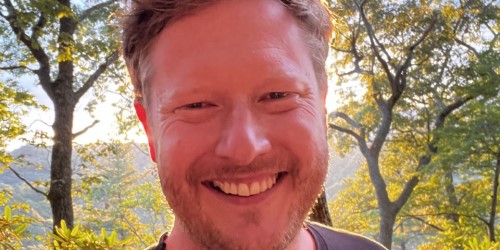Beyond the light: investigating nocturnal animal senses

Humans aren’t built for darkness, so we still know very little about the senses of creatures that inhabit dark spaces.
The challenge
In the past, confined by our five senses, humans have got a lot wrong about the ways animals sense their environments. How can we move beyond our sensory limitations to better understand the natural world, particularly at night? And how have we viewed the ability and fragility of animals – and, by extension, humans – across history?
Our work brings together the diverse disciplines of history, conservation and disability studies, investigating historical attitudes to help address present-day global challenges.
What we're doing
Using papers and research notes dating from 1750 to almost the present day, we reconstructed how naturalists perceived the species that inhabit dark spaces and how these animals sensed the world.
We found a long historical discourse, often, centred around the supposed sensory shortcomings of animals. Blindness, for example, is usually viewed as a deficiency. Alongside this perspective, we also found works almost fetishising difference as a super-ability.
As we get closer to the present day, there’s a growing appreciation of how sensory diversity equips animals to survive, particularly as technology begins to help researchers interrogate senses – using ultrasound to ‘hear’ bat echolocation, for instance.
Our project also tracked awareness about the impacts of human activity on animals. This emerges in the 1870s, with researchers simply wondering aloud whether installing electric lights in caves might affect the animals that lived there. It’s another 100 years before a narrative of caring for wildlife gains popularity, but even that reflects the idea of powerful humans needing to protect animals.
How it helps
We’ve developed learning resources called Wild Senses for Key Stages 2 and 3 that explore how scientists have understood senses, how human activity impacts animal senses and what young people can do to make their local environments friendlier for nocturnal wildlife.
We’d also like to encourage more cross-disciplinary conversations in life sciences and humanities to understand animal senses as part of conservation and climate change efforts.
Ultimately, if our research helps people appreciate that our shared planet is built on sensory diversity, that can impact how we design environments, do our work and think about our place in the world.
Investigators
- Dr Andy Flack (PI), Department of History
- Dr Alice Would, Department of History
 Lead researcher profile
Lead researcher profile
Dr Andy Flack, Senior Lecturer in Modern and Environmental History
Related research centres
Partners
- Ed Drewitt, Naturalist
- Catherine Lamont Robinson, artist and researcher
Funders
- AHRC Leadership Fellowship (Early Career)